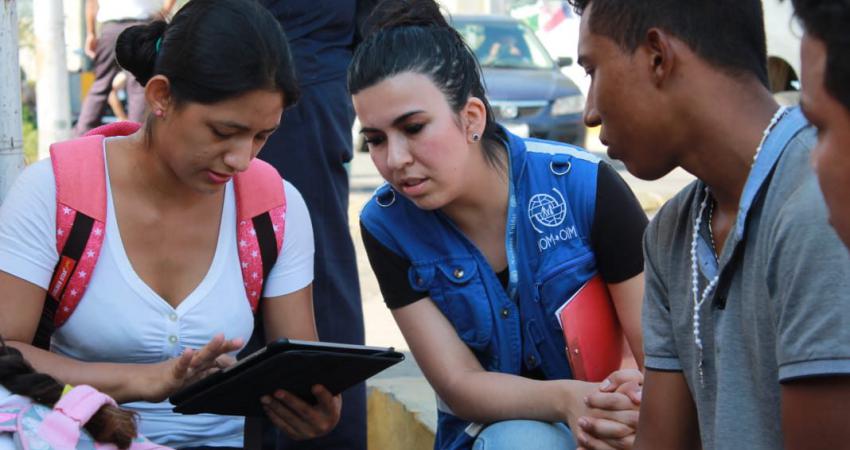IOM study presents updated information on migration flows in southern Mexico for 2019

A Displacement Tracking Matrix (DTM) study carried out by the International Organization for Migration (IOM) has provided governments, civil society organizations, and other actors with updated information on the migration flows passing through Tapachula, a municipality on Mexico’s southern border with Guatemala.
“At IOM, we work to promote regular, orderly, and safe migration within a framework of respect for human rights; to achieve this it is essential to provide information such as that generated by the DTM to enable governments, institutions, and organizations to make evidence-based decisions,” stated Alexandra Bonnie, IOM Regional Program Coordinator.
The results of the study indicate that the primary needs migrants face in Tapachula are medical assistance and access to information about migration processes. Additionally, the language barrier is a determining factor in the difficulties extra-regional migrants face during the journey.
“I think the document is useful since it will reach many people who will be able to learn about the work we do for migrants in the shelter day to day. It will also help them understand the challenges and needs involved...” stated David Lopez Bartolon, Director of Buen Pastor Shelter.
The primary risks to the migrant population in the area include community insecurity, discrimination and xenophobia, and overcrowding in reception centers and shelters. 77% have suffered emotional disorders related to stress and anxiety in the past year. Migrants recognize that this situation is caused by the uncertainty involved in undertaking unplanned migration and by the conditions experienced in their countries of origin.
Approximately 62% of the people identified are from Central America, in particular from Honduras (47%). 38% are considered extra-regional and the primary countries of origin include Haiti (13%) and Cameroon (8%). In terms of push factors, people coming from African countries are migrating in search of improved socioeconomic conditions due to conflict situations in their countries, whereas citizens of northern Central America and Cuba identify insecurity as the primary push factor that led them to leave their countries.
In order to collect the information, evaluations were conducted in high-traffic locations that provide shelter or temporary residence to migrants. These locations were evaluated through various methods, including an evaluation instrument verified by key informants, observation exercises during tracking visits, and systematic review of press releases and local news on the locations in question. In order to collect information directly from migrants, surveys were performed with 209 participants and interviews were conducted through focus groups with 103 participants grouped by nationality at the identified tracking points.
DTM is a methodology developed by IOM to facilitate understanding of the needs of populations in motion. The study was conducted within the framework of the Regional Migration Program: Mesoamerica-The Caribbean and information was collected June 2019. The study can be downloaded here [Spanish]: https://dtm.iom.int/reports/mexico-diagn%C3%B3stico-para-monitoreo-de-flujos-y-seguimiento-la-movilidad
